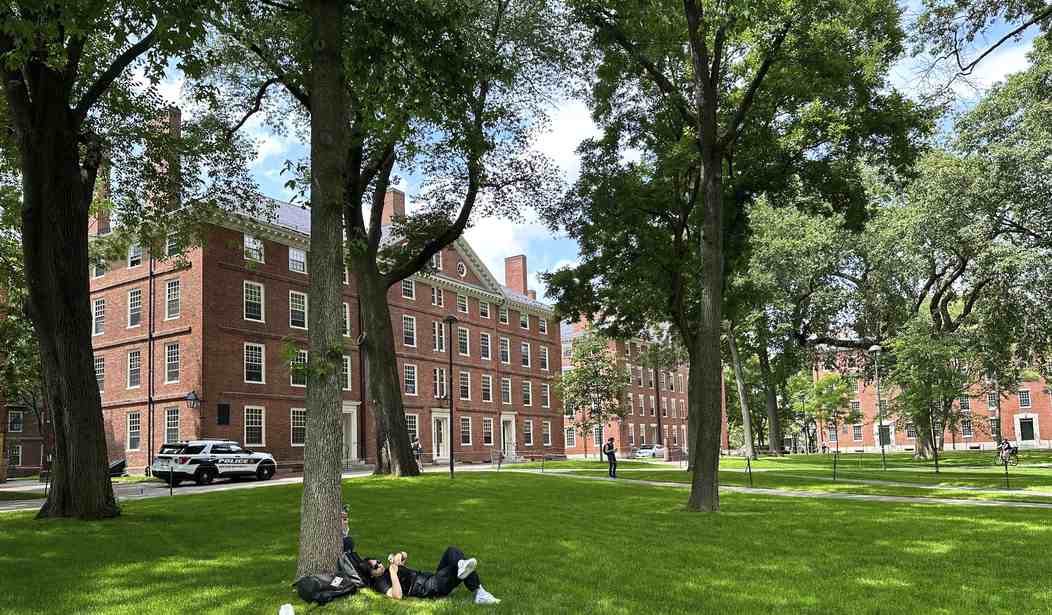To be clear, Harvard did release some admissions data earlier this year. We know for instance that the number of applicants was down this year by about 5 percent. We also know that the school accepted just 3.59% of applicants.
What we don't know is the thing that everyone has been wondering about. What happened to the demographics of the incoming class in the wake of the Supreme Court decision ruling out Affirmative Action. While a number of other schools have released their data, Harvard so far has not despite promising to do so. A campus activist group has been demanding the data.
Back in December, in a major break with precedent, Harvard withheld the race and ethnicity statistics of early admits. Hiding behind legal challenges, the University claimed it would still report the data after the deadline to commit to Harvard in May. And yet, four months later, surprise, surprise, Harvard has still not coughed up the numbers.
To mount public pressure, the African and African American Resistance Organization, which I help organize, launched the “Release the Data!” campaign to expose the University’s lack of transparency. Nearly 30 AFRO members and other Harvard affiliates sent emails demanding Dean Rakesh Khurana and President Alan M. Garber ’76 release the data. They continue to leave us in the dark.
That was published last week in the student paper and still Harvard hasn't released anything. What exactly are they afraid of?
The results released by other schools have been a very mixed bag. In some cases, we saw a drop in the enrolment of black and Hispanic students and an increase in the number of Asian students. This is what the plaintiffs in the Supreme Court case suggested we would see.
Overall, about 17 percent of MIT’s new class is made up of black, Hispanic, and Indigenous students—down 14 percentage points from the class of 2027. Black students made up 5 percent of the new class (down from 15 percent the year before); Asian Americans made up 47 percent of the class, up from 40 percent the prior year...
Brown reported that among “new first-year students, 18 percent come from groups historically underrepresented in higher education, a decline from 27 percent in 2023,” with the share of self-reported domestic black or African American undergraduates declining to 9 percent from 15 percent, and of Hispanic or Latinx students to 10 percent from 14 percent. The Asian American cohort increased from 29 percent to 33 percent of the entering class, and the share of students self-reporting as white decreased 3 percentage points.
But that wasn't the case at all schools. At Yale the numbers changed only slightly from the previous year, with Asian enrollment going down.
Compared to the class of 2027, admitted in the last race-conscious admissions cycle, the class of 2028 saw a 4 percent increase in the share of white students and a 6 percent decrease in the share of Asian American students. The percentage of both Black or African American students and Native American students remained the same.
Results were similar at Princeton:
Hispanic/Latine enrollment at Princeton experienced a one point drop, from 10 percent to nine percent, while Black enrollment shifted by less than one percent.
Asian American enrollment, however, experienced a 2.2 percent decrease from 26 percent to 23.8 percent...
University President Christopher Eisgruber ’83 announced his intention to maintain diversity at the University in spite of an affirmative action ban during a January 2023 interview with The Philadelphia Inquirer.
“We’re going to be as creative as we can within the boundaries of the law,” he said ahead of the Supreme Court ruling.
How creative were they, I wonder. The fact that some schools are seeing big changes in line with expectations while others are seeing hardly any changes raises an obvious question about what these schools are doing differently. Writing for City Journal, Robert VerBruggen notes that the data from Yale, Duke and Princeton is not only at odds with the expectations of the plaintiffs in the case, but their own as expressed in a brief submitted to the court.
Some schools seem to be adhering to the ruling...
Other schools’ compliance is less clear. At Yale—where the admissions office does not see applicants’ self-reported race—the black and Hispanic shares remained flat, the Asian share fell six points, and the white share rose four. Duke and Princeton reported similar results after the Court’s ruling: black and Hispanic shares flat, the Asian share down.
Without detailed admissions data (and likely a lawsuit to force their disclosure), it’s not possible to say how exactly these schools adjusted their processes to achieve these perplexing results. Notably, Yale, Duke, and Princeton all joined a legal brief before the Court’s ruling arguing that explicit consideration of race in the admissions process was necessary to prevent large declines in black enrollment at elite schools.
I don't have any inside information but it seems obvious that any change to the makeup of the incoming class this year demonstrates that Affirmative Action was having an impact on enrollment, an impact everyone expected in advance. So it's very interesting that about half these Ivy League schools are seeing almost no change. No one expected that, not even the schools now reporting it.







Join the conversation as a VIP Member